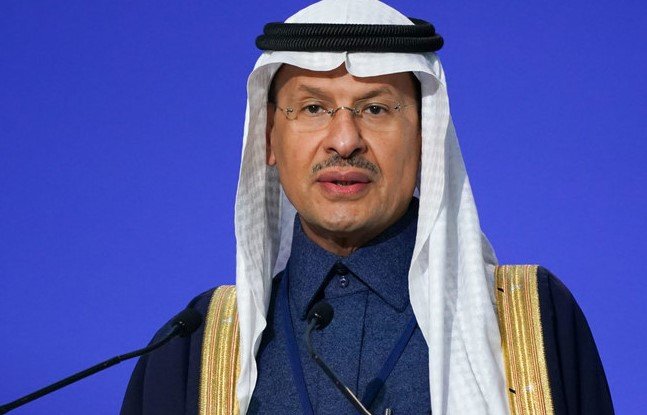Prince Abdulaziz touts Kingdom’s clean energy edge in solar, hydrogen and battery tech
Saudi Arabia’s energy chief has made a bold claim that’s turning heads from Beijing to New Delhi — the Kingdom is now cheaper than China and India when it comes to renewable energy.
Speaking at a packed forum in Riyadh on Sunday, Prince Abdulaziz bin Salman didn’t mince words: “Catch up with us if you can.” And he wasn’t joking. With deals signed last week totaling 15 gigawatts in clean energy projects, the Kingdom is flexing serious green muscle — and doing it at some of the lowest prices on the planet.
Price Tag Politics: Saudi’s Cheapest-Energy-in-the-World Push
It’s no secret that renewables have become a new kind of geopolitical soft power. China once led the field with low-cost manufacturing and a near-monopoly on solar panel exports. India followed, ramping up domestic solar production and massive infrastructure investments.
Now? Saudi Arabia’s not just catching up. It’s undercutting them.
According to Prince Abdulaziz, the latest round of tenders came in at prices lower than both China and India. That’s not just a brag — that’s a direct shot at two of the world’s most aggressive renewable energy players.
The reason, he says, lies in scale, location, and sheer ambition.
Projects That Are Breaking Records
The minister pointed to the Bisha battery storage project and a string of recent tenders as proof. These aren’t pilot programs or test runs — they’re full-scale rollouts.
In the last week alone, Saudi Arabia:
-
Signed deals covering 15 gigawatts of renewable capacity.
-
Secured some of the lowest solar and wind prices globally.
-
Finalized next-phase contracts for large-scale hydrogen export capacity.
Most of these projects are backed by the government’s Public Investment Fund (PIF) and rolled out under the Vision 2030 blueprint — the Kingdom’s masterplan for a post-oil economy.
“We’re not talking about something aspirational anymore,” said an analyst in Riyadh who asked not to be named. “This is real. They’re doing it, and they’re doing it cheaper than almost anyone else.”

Saudi’s Big Bet on Green Hydrogen
It’s not just solar. Saudi Arabia is making a hard push into green hydrogen — the clean energy source du jour for countries looking to decarbonize hard-to-abate sectors like steel and shipping.
And here’s where it gets spicy: Prince Abdulaziz claimed the Kingdom now holds a cost advantage in green hydrogen production too.
One-liner: That’s a direct challenge to Europe, Australia, and Japan — all pouring billions into the same tech.
The Neom Green Hydrogen Company, a joint venture between ACWA Power, Air Products, and NEOM, is already under construction and will produce 600 tons per day of green hydrogen once complete. Slated for 2026, it could be one of the world’s first industrial-scale hydrogen facilities.
How Saudi Managed to Beat China and India on Cost
This part is interesting. Because, honestly, how do you beat China on cost?
Prince Abdulaziz says it comes down to a few things:
-
Vast land availability for solar and wind at utility-scale.
-
Direct state support and fast-track permitting.
-
Low-cost capital from sovereign funds like the PIF.
-
Co-located energy + storage + export infrastructure.
-
Long-term planning without political gridlock.
Here’s a quick snapshot comparing the three countries:
| Metric | Saudi Arabia | China | India |
|---|---|---|---|
| Average solar tender cost | ~$0.013/kWh | ~$0.017/kWh | ~$0.019/kWh |
| Battery project rollout | Scaling fast | Mature market | Emerging capacity |
| Hydrogen pilot projects | Active export JV | Domestic focus | Mostly planned |
| Regulatory framework | Centralized & fast | Provincial layers | Federal delays |
“Catch Up If You Can”: Not Just Rhetoric
That quote might sound cocky. But it’s backed by confidence.
Prince Abdulaziz isn’t exactly known for understatements. But over the past two years, many of his public predictions — including on oil market stability and global energy flows — have played out. So when he says Saudi Arabia is setting new global price floors for renewables, folks tend to listen.
He even hinted at battery manufacturing capacity beginning to rival China — a jaw-dropping claim that would have seemed laughable just a year ago. But with the Bisha battery complex gaining momentum and talk of local mineral processing zones under Vision 2030, it’s suddenly not so crazy.
There’s a new energy narrative brewing in Riyadh. And it doesn’t involve crude oil.
Global Implications? Oh, Absolutely
If Saudi Arabia really has cracked the renewables-cost code, that could upend long-held assumptions.
For starters:
-
Export markets for green hydrogen could shift dramatically.
-
Global investors may reallocate ESG funds toward Gulf-based clean tech.
-
Oil-rich Gulf states may become clean energy exporters — not just fossil fuel ones.
One-sentence paragraph, here we go.
That’s a pretty wild reversal, considering the Kingdom was once seen as a climate laggard.
But now? It’s racing toward being one of the cheapest clean energy hubs anywhere.
Final Thought: It’s All About Speed
What’s most remarkable isn’t just the cost advantage — it’s the speed.
Saudi Arabia didn’t have a serious renewables sector until around 2018. In just seven years, it’s gone from almost zero to signing some of the largest and cheapest green energy contracts globally.
Other countries — particularly in Europe and North America — are still stuck in permitting loops and legal wrangling. Saudi Arabia? It’s already exporting.
That doesn’t just level the playing field. It might flip it entirely.
